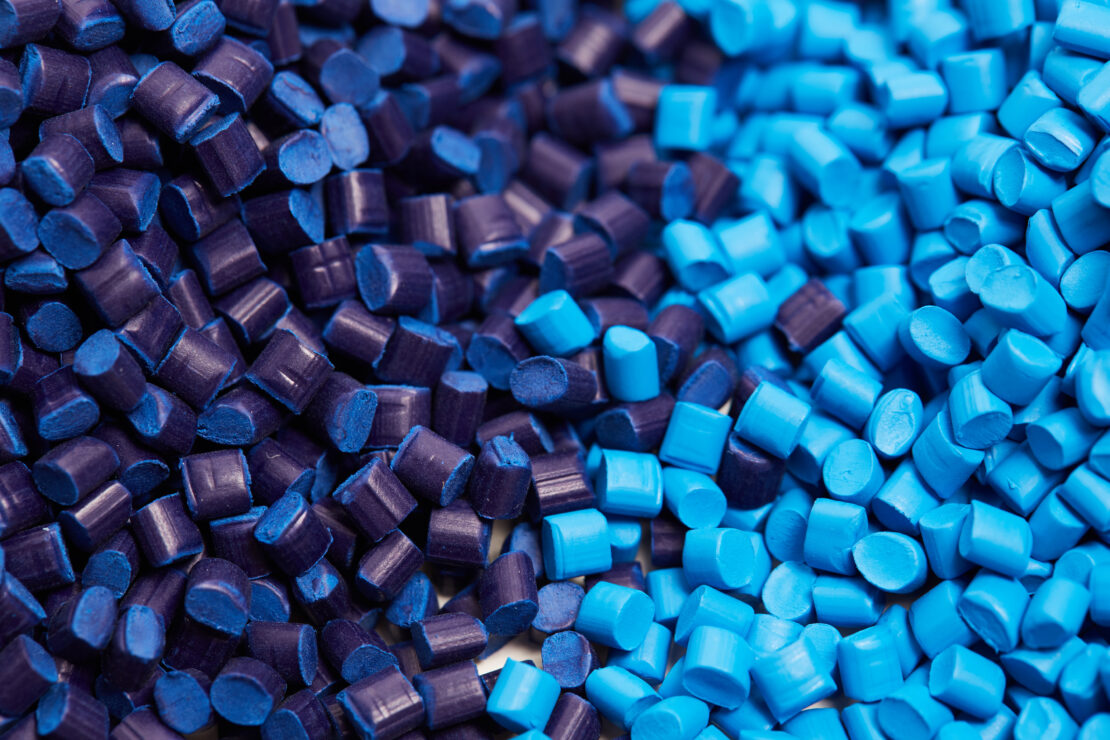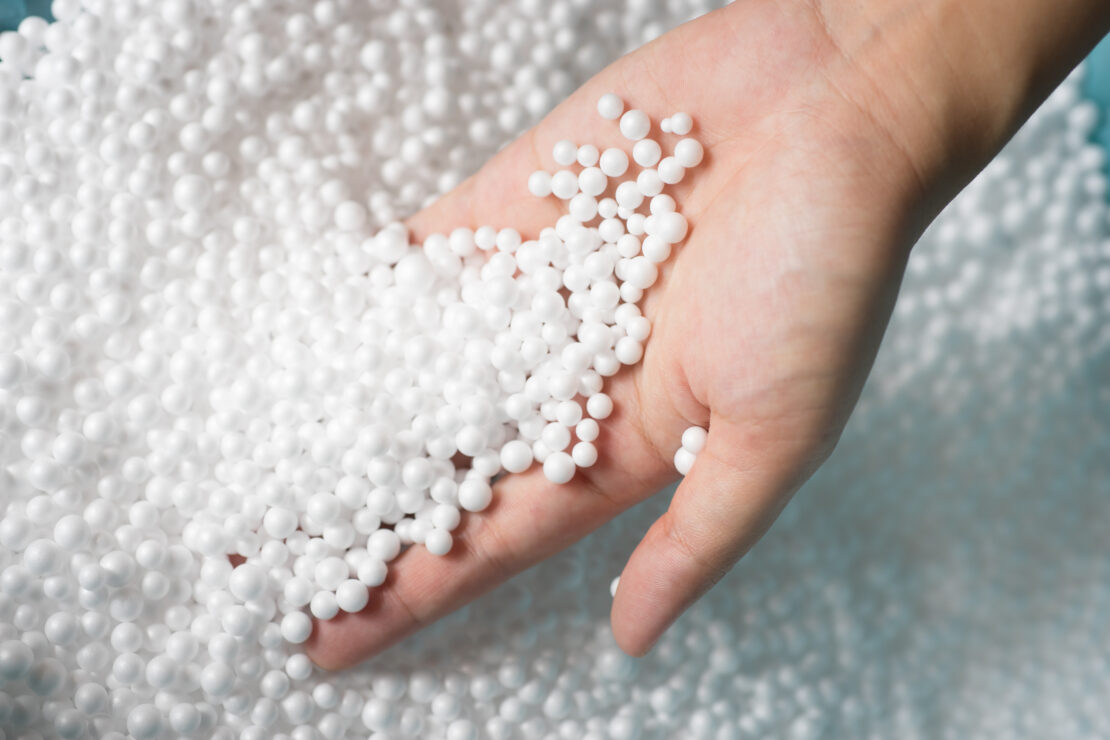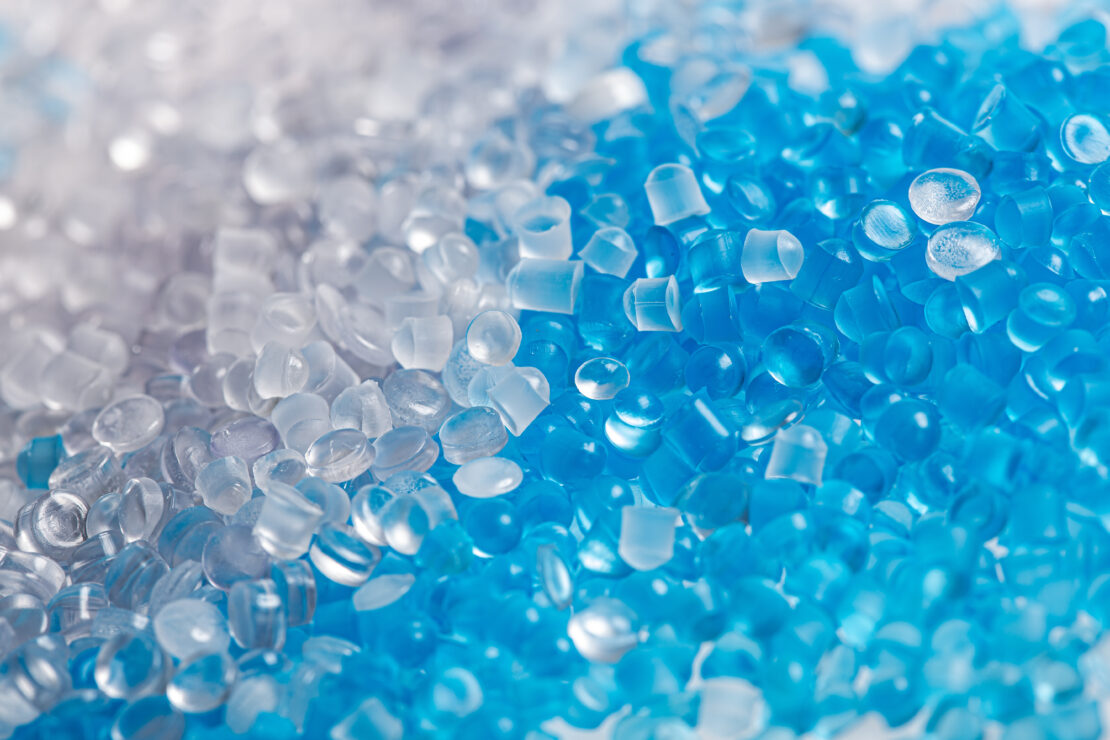
The 5 Most Common Types of Injection Molding Materials
Plastic injection molding is used worldwide by manufacturers due to its ability to consistently produce high-quality components. Many industries rely on it, from automotive and aerospace to consumer goods.
However, achieving successful results in plastic injection molding comes down to tooling design and the materials used to create components. In this article, we’ll explore the five most common types of injection molding materials, their advantages and disadvantages, and use cases, and provide guidance on how to select the best material for your application.
1. Polypropylene (PP)

Polypropylene, or PP, is a lightweight thermoplastic polymer known for its durability, high chemical resistance, low moisture absorption, and good thermal stability.
Advantages
- High Strength-to-Weight Ratio: PP is a great material choice for any application that requires exceptional strength yet a lightweight design.
- High Rigidity: High rigidity means that polypropylene can maintain dimensional stability and structural integrity during molding. It also means that the final component will have fewer shrinkage, distortion, and flow issues.
- Impact Resistance: PP can withstand sudden shocks or impacts without deforming, making it suitable for many automotive applications.
- Chemical Resistance: Polypropylene is resistant to many chemicals, acids, and corrosive substances. However, it may perform poorly in applications with certain solvents or oxidizing agents, such as bleach.
- Low Moisture Absorption: PP can perform well in humid environments because it doesn’t absorb as much moisture as other polymers.
- Affordable: The price of polypropylene has decreased since the beginning of 2023. It currently costs $963 per metric ton.
- Sustainable: Manufacturers committed to sustainability may also opt for PP because it is a recyclable material.
PP can also maintain high performance and strength at a wide range of temperatures, from around 14 to 248 degrees Fahrenheit.
Disadvantages
- Low Heat Resistance: The melting point of PP is around 329 degrees Fahrenheit, which makes it unsuitable for most high-temperature applications.
- Low UV Resistance: PP will degrade and discolor if exposed to UV radiation over time.
- Not Ideal for Multi-Material Injection Molding: Polypropylene is not recommended for multi-material injection molding processes because it has low bonding capabilities. Some surface treatments and welding techniques can increase its bondability, but it’s generally difficult to bond.
Use Cases
Polypropylene is a versatile material frequently used in plastic injection molding to produce household products, medical devices, automotive components like bumpers and dashboards, and electrical components.
2. Polyethylene (PE)

Another popular injection molding material is polyethylene or PE. Like PP, it’s a lightweight thermoplastic polymer with high chemical and impact resistance and excellent rigidity.
Advantages
- Lightweight: Polyethylene is incredibly lightweight, making it useful for packaging and other applications where low weight is ideal.
- Exceptional Chemical & Impact Resistance: PE is more resistant to chemicals than PP, so it’s better suited in environments where it will be exposed to corrosive substances. It also has exceptional resistance to shocks and other sudden impacts.
- Recyclable: On its own, PE is recyclable, but not when it’s bonded to other materials.
- Good Flexibility: Polyethylene is known for its high elongation and ductility, which means it can repeatedly bend and flex without cracking or breaking.
Disadvantages
- Poor Dimensional Stability: Polyethylene is not a rigid or stiff material and has a high thermal expansion coefficient. During plastic injection molding, temperature variations can cause it to expand and contract, leading to dimensional inaccuracies.
- Not UV Resistant: Similar to PP, PE will discolor and degrade when exposed to UV rays over an extended period.
- Not Suitable for High-Temperature Applications: The melting point of PE is around 275 degrees Fahrenheit, so it is not suitable for high-temperature applications.
Use Cases
Polyethylene is a versatile polymer but not as affordable as polypropylene. It’s primarily used to create packaging (especially because PE can be transparent), piping, prosthetics, manufacturing containers, and some automotive components like door panels.
3. Polystyrene (PS)

Polystyrene (PS) is also a thermoplastic polymer. It is incredibly rigid, lightweight, and has exceptional insulating properties.
Advantages
- Low Melt Viscosity: Polystyrene has a low melt viscosity, making it an easier material to work with in plastic injection molding. This low melt viscosity can also contribute to faster cycle times.
- Great for Masterbatching: PS can be easily modified with additives in the masterbatching process, making it exceptional for consumer goods or other products that must be aesthetically appealing.
- Exceptional Thermal Insulation: PS is sometimes used as insulation or packaging to protect thermal-sensitive goods due to its thermal properties.
- Transparent: Similar to PE, polystyrene is transparent, making it ideal for packaging or any application where the product needs to be visible.
Disadvantages
- Brittle: Polystyrene is more susceptible to cracking and breaking in stressful environments.
- Not Suitable for High-Temperature Applications: Like most of the injection molding materials discussed earlier, PS deforms at low temperatures (around 176 degrees Fahrenheit), which means it will not perform well in high-temperature applications.
- Not Resistant to Chemicals: Polystyrene can degrade when exposed to solvents and other petroleum-based products.
- Little Impact Resistance: PS isn’t suitable for most rough environments because it can easily fracture or break when under impact or stress. It’s important to note that there is some high-impact polystyrene, which is a rubber-modified version of polystyrene that can be used in some high-impact applications.
Use Cases
Polystyrene generally shouldn’t be used in high-temperature or high-stress environments due to its lack of resistance to impact and chemicals. Its other mechanical properties make it suitable for consumer products, like office supplies, packaging materials, and any application that needs insulation.
4. Acrylonitrile Butadiene Styrene (ABS)

ABS, or acrylonitrile butadiene styrene, is one of the most popular injection molding materials because it is tough, highly resistant to impact, chemicals, and heat, and its exceptional dimensional stability.
Advantages
- Heat Resistance: Compared to PP, PE, and PS, ABS has exceptional heat resistance. Its heat deflection temperature range is between 158 and 212 degrees Fahrenheit but may vary based on its formula.
- Impact Resistance: ABS is great for any product that needs to be protected from sudden impacts.
- Some Chemical Resistance: Acrylonitrile butadiene styrene is not as resistant to chemicals as PE, but it does exhibit moderate resistance to oils and greases. It is not resistant to strong acids and solvents.
- Exceptional Surface Finish: ABS is capable of producing components with smooth surface finishes.
- High Strength: Acrylonitrile butadiene styrene may be used for load-bearing applications because it has high strength and can maintain dimensional stability under pressure.
- Dimensional Stability: ABS maintains exceptional dimensional stability during plastic injection molding, making it ideal for creating components with complex geometries.
- Great for Masterbatching: Like PS, ABS is also great for masterbatching. It can be easily colored with all types of additives.
Disadvantages
- Toxic Fumes: ABS will release toxic fumes when under high temperatures, so extra safety precautions are needed.
- Not Easily Recyclable: While ABS is recyclable, it may not be compatible with other recyclable materials. It’s also difficult to separate ABS from other plastic materials; if it’s not properly separated, it can contaminate other materials.
- Can Warp or Shrink: Although ABS is a highly processable material, it can warp and shrink during the cooling process.
- Not Suitable for High-Temperature Applications: Acrylonitrile butadiene styrene has the most heat resistance compared to PP, PE, and PS, but it’s still unsuitable for high-temperature applications. It may deform and lose dimensional stability, and it will release toxic fumes.
- Not UV Resistant: ABS is typically not recommended for any application exposed to prolonged sunlight unless a UV stabilizer is added before processing.
Use Cases
ABS is ideal for high-impact/high-strength applications that aren’t in corrosive environments or when smooth surface finishes are needed. In plastic injection molding, ABS is used to produce instrument panels, refrigerator liners, vacuum cleaners, computer keyboards, and some pipes.
5. Polyvinyl Chloride (PVC)

Lastly, polyvinyl chloride (PVC) is a thermoplastic polymer that is highly moldable and resistant to chemicals.
Advantages
- Weather Resistance: Unlike ABS, PVC is highly resistant to moisture and UV radiation, which is why it’s often used in roofing systems.
- Electrical Insulation: PVC has exceptional electrical insulation properties as it has high dielectric strength and low electrical conductivity.
- Chemical Resistance: PVC has the best chemical resistance out of all the injection molding materials outlined in this article. It can resist most chemicals, acids, bases, and oils.
- Lightweight: Polyvinyl chloride is also lightweight and easy to handle.
Disadvantages
- Poor Heat Resistance: Like all the plastic materials discussed, PVC also has low heat resistance. Its melting point is between 212 and 500 degrees Fahrenheit.
- Toxic Fumes: Similar to ABS, PVC releases toxic fumes during certain high-temperature processes, so proper ventilation and safety precautions are required.
- Not Environmentally Friendly: PVC contains chlorine, a non-renewable, unstable resource that can potentially pollute water and harm marine life if not disposed of properly.
- Low Impact Resistance: PVC is not well-suited for any rugged environment where it will be exposed to sudden impacts and shocks.
- Not Naturally Flexible: Most PVC formulas include plasticizers to improve flexibility. However, these plasticizers will leach out over time, increasing brittleness and risks of cracking/breaking.
Use Cases
Due to its exceptional chemical resistance and electrical insulation, PVC is primarily used to produce pipes/fittings, connectors, harnesses, electrical enclosures, IV tubing, medical-grade containers, and some construction materials (like roofing).
How to Select a Material
It’s highly recommended that you work with a plastic injection molding professional when choosing a material. Getting the tooling design right is what makes the process fast and repeatable.
Generally, when selecting a material, you’ll want to consider the application itself. Are there any industry requirements that the products must adhere to? Does the application require specific mechanical properties or a surface finish (e.g., implants need smooth surface finishes)? Is the component being produced simple or complex? Will it need to be colored? What environment will the product be in? (e.g., high-impact, high-temperature, corrosive, outdoor, etc.)
You’ll also need to consider your budget. When comparing these injection molding materials, PVC is often the most expensive option, while PE or PP are more affordable options. It’s important to note that these prices will vary over time.
Lastly, you’ll want to think about sustainability and environmental impact. If it’s important to your company and consumers, you’ll want to choose a suitable material that’s also recyclable and considered environmentally friendly.
If your application is high-temperature, none of the materials in this article will be suitable.
Get Help From Silver Basis Engineering
Ensure success in your plastic injection molding project by working with a professional. An injection molding company can help you select the best materials for your application and budget, design and develop cost-effective tooling, and handle the plastic injection molding process from start to finish.
Silver Basis Engineering is an award-winning plastic injection molding manufacturer offering a wide range of capabilities, including milling/machining, plastic injection molding, mold tryouts, tooling design and development, assembly, and prototyping. Contact us today with general questions about plastic injection molding or to learn more about our capabilities.
